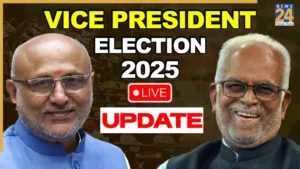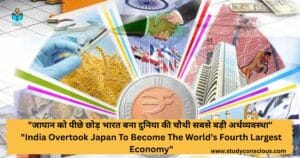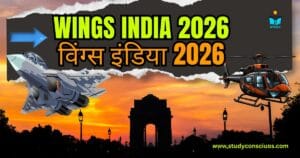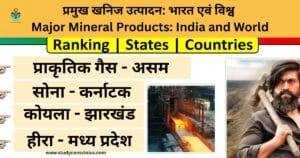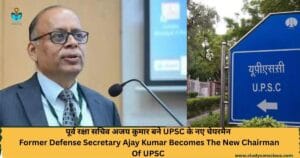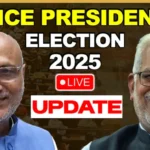With the prevailing elections all around the country and the world, and the existing tuff fight between the political leaders for the power and position, all the power resists with the controlling and regulating body popularly known as Election commission of India. The body which is responsible for conducting the free, fair and transparent elections in the state as well as nationwide. Election commission is the one responsible for all the activities that takes place during the process of election. From the start of the training given to candidates till the security of the ballot and EVM machines and the counting of votes till the declaration of results everything is being systematically and efficiently managed by the Election commission. There has been new formulation as the time travels, the latest one is Remote voting for elderly who are of 85 years of age and above, it also includes the persons with benchmark disability with the app named “SAKSHAM”.
History of Election Commission
The Election Commission of India (ECI) has a rich history, playing a pivotal role in shaping the democratic framework of the country. Here’s a detailed look at the history of the ECI:
1. Formation
- The Election Commission of India was established on January 25, 1950, just a day before the Republic of India came into existence. This was in line with Article 324 of the Indian Constitution, which mandated the establishment of an independent body to supervise and conduct elections in India.
- The first Chief Election Commissioner (CEC) was Sukumar Sen, who played a monumental role in organizing the first-ever general elections of India.
2. First General Elections (1951-52)
- India’s first general elections were held in 1951-52, just after gaining independence from British rule in 1947.
- These elections were a massive undertaking, as over 173 million people were eligible to vote, a significant portion of whom were illiterate. The election required an enormous logistical effort, including the printing of multiple symbols for political parties to assist voters in identifying candidates.
- Sukumar Sen, as the first CEC, was credited for successfully managing these elections, setting the foundation for Indian democracy.
3. Early Years (1950s-1970s)
- During its initial years, the Election Commission was a single-member body headed by the CEC.
- The ECI, in its early years, faced the challenge of conducting elections in a vastly diverse country, characterized by different languages, cultures, and geographies. The elections were often held in phases to manage this diversity.
- The commission evolved its processes over time, including the gradual introduction of modern technologies to streamline voter registration and polling.
4. Multi-Member Commission (1989 and 1993)
- Initially, the Election Commission was headed by only one Chief Election Commissioner. However, in 1989, the commission was briefly expanded to include two additional Election Commissioners due to the increasing complexities in managing elections across India. This was done by the government of Prime Minister Rajiv Gandhi.
- The decision to make it a multi-member commission, however, was controversial, and within a few months, the commission was reverted to a single-member body.
- In 1993, under the leadership of Prime Minister Narasimha Rao, the government made the Election Commission a permanent multi-member body by appointing two additional Election Commissioners. Since then, the ECI has functioned with three members—the Chief Election Commissioner and two Election Commissioners.
5. Introduction of Electronic Voting Machines (EVMs)
- The Electronic Voting Machine (EVM) was first introduced in a limited manner in 1982 in the by-election for the Parur Assembly Constituency in Kerala.
- However, the widespread use of EVMs began in the 1990s, and by the 2004 general elections, the entire country used EVMs for the first time in a national election.
- EVMs have since become a crucial part of the Indian electoral system, although they have faced controversies and challenges, leading to the introduction of the Voter Verifiable Paper Audit Trail (VVPAT) for greater transparency.
6. Model Code of Conduct (MCC)
- The Model Code of Conduct (MCC), which provides guidelines for political parties and candidates during elections, was formalized and gained significance in the late 1960s.
- The Election Commission has progressively enforced the MCC more strictly in recent years, ensuring that parties adhere to ethical campaigning practices.
- During CEC T. N. Seshan’s tenure (1990-1996), the enforcement of the MCC became rigorous. Seshan was known for his tough stance on electoral malpractices, significantly reforming the election process and boosting the credibility of the Election Commission.
7. Major Electoral Reforms
- Introduction of Voter ID Cards (1993): The Election Commission introduced the concept of Voter Identity Cards for all eligible voters to prevent electoral fraud and ensure a more secure election process.
- Voting Rights for Armed Forces: The ECI facilitated voting for armed forces personnel who were often stationed far from their home constituencies.
- Campaign Finance Monitoring: The ECI has taken numerous steps to control the funding of election campaigns and introduced regulations on campaign expenditure.
8. Election Commission in the 21st Century
- Voter Verifiable Paper Audit Trail (VVPAT): Introduced in phases starting in the 2014 Lok Sabha elections, this system allows voters to verify that their vote has been correctly registered on the EVM. By the 2019 general elections, VVPATs were used across all polling stations.
- Digital Initiatives: The ECI has embraced technology, creating the Voter Helpline App, online voter registration, and introducing innovative methods for easier and transparent elections.
- Remote Voting: The Election Commission has been researching and working on the concept of remote voting for migrant workers and non-resident Indians (NRIs) to ensure maximum voter participation.
9. Recent Developments
- Electoral Bonds: The Election Commission has raised concerns about the lack of transparency regarding electoral bonds, which were introduced in 2018 to fund political parties.
- Awareness Campaigns: The ECI continues to promote voter education and participation through campaigns like “SVEEP” (Systematic Voters’ Education and Electoral Participation) to ensure informed voting and higher voter turnout.
Composition of Election Commission
The Election Commission consists of –
- Chief Election Commissioner (CEC) and two other Election Commissioners.
- The President of India appoints the CEC and Election Commissioners.
- Their terms last for six years, or until they reach the age of 65, whichever comes first.
Roles and Responsibilities
- Conduct of Elections: The ECI oversees elections to the Lok Sabha, Rajya Sabha, and State Legislative Assemblies in India, as well as the offices of the President and Vice President.Voter Registration: It ensures that voter rolls are accurate and updated regularly.
- Model Code of Conduct (MCC): It enforces a set of guidelines for political parties and candidates to follow during election campaigns.
- Monitoring Campaign Spending: The Commission monitors campaign expenditures to prevent excessive spending by candidates.
- Political Party Regulation: The ECI registers political parties, oversees their operations, and ensures they comply with relevant laws and codes.
- Voter Education: It conducts awareness programs to educate voters about their rights and encourage voter participation.
Powers
- Supervisory and Control Powers: The ECI has the authority to take necessary actions to ensure free and fair elections. This includes:
- Rescheduling elections in case of emergency.
- Cancelling elections if they are marred by corruption or malpractice.
- Judicial Powers: It can disqualify candidates and decide on disputes related to elections.
- Enforcement of MCC: The Commission can reprimand candidates and political parties that violate the Model Code of Conduct.
Challenges faced
- Electoral Malpractice: Despite efforts to curb it, challenges such as voter bribery, violence, and misuse of government resources during campaigns persist.
- Fake News and Social Media Influence: Managing the spread of misinformation during elections has become increasingly difficult in the age of digital media.
- Election Funding: Monitoring and controlling political funding is a complex issue, particularly with the introduction of electoral bonds.
Some latest Elections conducted
(Dated 08 October 2024)
Haryana: The Bharatiya Janata Party (BJP) is set for a historic third term in the state, having won 34 seats out of 90 as of the latest updates, while Congress secured 30 seats. The BJP’s policies under Prime Minister Modi’s leadership were seen as decisive factors, while the Congress aimed to end its decade-long absence from power.

Jammu & Kashmir: This Union Territory held its first assembly elections in a decade, following the abrogation of Article 370. The National Conference (NC) and Congress alliance secured a majority, with Omar Abdullah likely to be the next Chief Minister. The elections, held in three phases, saw a high voter turnout of over 63%. The BJP, while not in the lead, won a significant number of seats.



